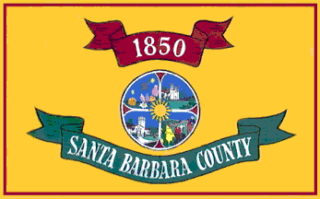
On February 6th, the Santa Barbara County Board of Supervisors met to consider an ordinance and policy amendments for land use activities associated with commercial cannabis. Currently and historically, all commercial cannabis activities have been prohibited within unincorporated Santa Barbara County. The Board of Supervisors approved the proposed ordinances “in concept,” together with some revisions regarding buffer zones, a delay in instituting energy conservation plans, an elimination of odor control requirements on certain large parcels in the AG-2 zone, a limit on where outdoor marijuana cultivation is allowed, and a cap on the number of retail locations. The ordinances will receive a second reading at the next meeting on February 13th, and will likely be adopted.
One of the highlights from the meeting was the decision to cap the number of available marijuana retail licenses at eight. These licenses will certainly be prized. Note that initially, the county had no cap, and there would have been 284 parcels where retail stores were allowed, a number that the Board of Supervisors deemed excessive and “outrageous.”
Here are some of the highlights from the proposed ordinances:
- No commercial cannabis activity will be allowed in the areas of Montecito that are subject to the Montecido Land Use and Development Code (MLUDC) regulations.
- For areas subject to the MLUDC’s regulations, the following would be allowed.
- Commercial cannabis cultivation and nurseries, subject to a Land Use Permit (LUP) in the AG-I, AG-II, C-3, M-RP, M-2 and M-2 zones;
- Non-volatile manufacturing, subject to an LUP, in the AG-I, AG-II, C-1, C-2, C-3, CS, SC, M-RP, M-1, M-2, MU, CM-LA, OT-R/LC, and OT-R/GC zones;
- Volatile manufacturing subject to a Major Conditional Use Permit (CUP) in the AG-I-AG-II, M-1, and M-2 zones;
- Testing, subject to an LUP in the C-3, PI, MR-P, M-1, and M-2 zones;
- Retail sales, subject to an LUP, in the C-1, C-2, C-3, SC, M-1, MU, CM-LA, OT-R/LC, and OT-RGC zones;
- Distribution subject to a Minor CUP (MCUP) in the AG-1 zone, and subject to an LUP in the AG-II, C-3, M-RP, M-1, and M-2 zones; and
- Microbusinesses, subject to a CUP in the AG-II, C-1, C-2, C-3, CS, M-1, and M-2 zones.
- For areas subject to the Coastal Zoning Ordinance (CZO) regulations, the following would be allowed:
- Commercial cannabis cultivation and nurseries subject to an LUP in the AG-I, AG-II, and M-RP zones;
- Non-volatile manufacturing subject to an LUP in the AG-I, AG-II, C-1, C-2, and M-RP zones;
- Volatile manufacturing subject to a CUP in the AG-I and AG-II zones;
- Testing subject to an LUP in the PI and MR-P zones;
- Retail sales subject to an LUP in the C-1 and C-2 zones;
- Distribution subject to a MCUP in the AG-I zone, and subject to an LUP in the AG-II and M-RP zones; and
- Microbusinesses subject to a CUP in the AG-II, C-1, and C-2 zones.
- Commercial cannabis cultivation, nursery, non-volatile manufacturing, distribution, or retail uses would not be permissible within 600-feet of a school, day care, or youth center.
- Volatile manufacturing would not be permissible within 1,200-feet of a school, day care, or youth center.
- Manufacturing and distribution uses would only be permissible as accessory uses to cannabis cultivation in the AG-I and AG-II zones.
- Commercial cannabis cultivation on lots that are located in an Existing Developed Rural Neighborhood (EDRN), as well as cultivation that would require the use of a roadway located within an EDRN as the sole means of access to the lot on which the cultivation would occur, would require a CUP.
- Commercial cannabis activity would also be subject to general development standards including:
- Compliance with state and local regulations;
- Preparation of archaeological and paleontological surveys;
- Preparation and implementation of an energy conservation plan;
- Fencing and security plan;
- Landscape and screening plan;
- Lighting plan;
- Noise plan;
- Odor abatement plan; and
- Tree protection, habitat protect, and wildlife movement plans.
While these aren’t the most onerous local permitting requirements we’ve seen, they are certainly extensive. The Board of Supervisors recognized that enforcement against illegal cannabis operations in the County has been difficult, and has pledged, regardless of whether this ordinance passes, to significantly increase enforcement resources aimed at unlicensed cannabis operations. It will therefore be imperative for anyone operating or seeking to operate in Santa Barbara County to follow the development and adoption of these regulations, and to be prepared for the license application process once it begins. As always, we’ll be following these developments closely.

